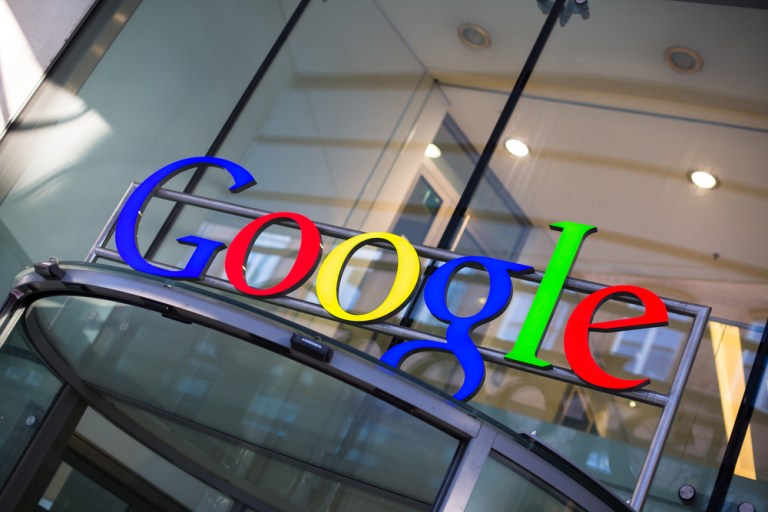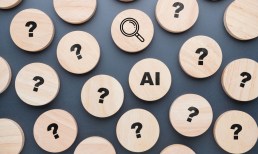The big news from Google this week was obviously the hardware event on Oct. 4, which you have likely read all about (but we’ll recap it below in case you missed it). But new smartphones and home speakers aren’t the only hardware the tech giant has been designing lately. From sky to sea, Google hardware could soon be all around us — and it could start in Puerto Rico.
Building a Better Balloon
The sky is the limit for Project Loon, which could help restore communications infrastructure to Puerto Rico in the wake of Hurricane Maria. These experimental high-altitude balloons just got clearance from the Federal Communications Commission (FCC) to fly over Puerto Rico and provide emergency cell and internet coverage to the Caribbean island.
Business Insider reports that 83 percent of cell sites remain out of service following the hurricane, leaving wireless carriers to deploy temporary solutions. Alphabet (Google’s parent company) has been working on Project Loon since 2013. The high-altitude balloons are solar-powered and designed to provide internet service in remote areas.
FCC Chairman Ajit Pai said Friday that he was forming a Hurricane Recovery Task Force to help Puerto Rico and the U.S. Virgin Islands recover from Maria, and that supporting the reconstruction of communications infrastructure will be a major part of that, Pai said.
Self-Driving Ships
The self-driving car market must be oversaturated already, because Google has moved on. That’s not to say it will abandon its autonomous vehicle ventures — merely that it is diversifying the sort of vehicles it can automate, a roster that now includes ships.
Google and Rolls-Royce are reportedly working together to improve Rolls-Royce’s artificial intelligence (AI) for situational awareness at sea. There are many objects a vessel can encounter out in the big blue, and not all of them are visible to radar or equipped with Automatic Identification Systems (AIS).
ZD Net offers a kayak as an example of a vessel that would not be carrying an AIS transmitter. Other obstacles such as animals and icebergs obviously do not carry transmitters, either.
Presently, a crew member has to watch for, spot and safely navigate around these obstacles. But in the same way that cars are equipped with perimeter cameras, so too can a ship, and AI could then be trained to process and act on the inputs.
While full autonomy is still a future fantasy, the Google Cloud Machine Learning Engine is already capable of at least assisting live crew members as Google and Rolls Royce work toward a smarter, self-sufficient ship.
Home Shopping
The Google homepage has added two new tenants to its sparse real estate: “About” and “Store.” These links are located in the upper left corner of the home screen. The former details the company’s history, software, team and trending searches, Engadget reports.
The latter is precisely what it sounds like: an easier-than-ever conduit to shop Google’s store, eliminating the need to search for that new Pixel 2 phone. All of the company’s hardware will be featured on the store, including the Daydream VR headset as well as the Google Home smart speaker family.
Pop-Up Store
Last holiday season, Google opened a pop-up store in New York City and another in Los Angeles, with the intent of showcasing and selling its latest “Made by Google” products. This year, once again, the retail stores will be popping up in these two cities starting October 19.
Although no official closing date has been posted, 9to5Google predicts that the stores will remain open at least through the holidays. Also unconfirmed: whether the pop-up stores will feature any made-for-Google products, such as dedicated headphones and other third-party accessories.
Good News for People who Love Bad News
“First click free” is going away. Or, at least, Google is giving up control over how many clicks are free before search engine traffic triggers the paywall on subscription news sites.
Google initially argued that the policy would boost subscriptions by giving readers a window into the content before requiring them to commit with their wallets. However, many media companies reportedly complained that the policy had the opposite effect.
Going forward, it will be up to publishers how many (if any) free articles readers can view before being asked to subscribe. Google is working on a tool that will make subscribing an easy, one-click process for users who have already supplied payment information to Google.
Hardware Event Recap
The new Pixel 2 and Pixel 2 XL phones: They’re not flashy, but they’re doing their own thing and doing it well. Where form factors may have been sacrificed, function won out — the result being a smartphone with unique features, such as squeezable edges that trigger the launch of Google’s messaging app Allo.
The camera is better but still only present on the back side of the phone, so users who love taking selfies may want to stick with the iPhone for another generation. The Pixel 2 phones also support Google’s visual search tool Lens, which lets users take pictures of things like books, movie posters, business cards and landmarks to identify and save them for later.
For starters, the Pixel 2 will only be available through Verizon — just like the Pixel 1 before it.
The new Google Home(s): the Mini extends Google Home coverage into multiple rooms of the house and, at $49, is a clear answer to Amazon’s Echo Dot.
On the other end of the spectrum, however, is the Google Home Max, with Smart Sound technology to adjust output based on physical surroundings and user preference (for example, turning up to compete with a running dishwasher, or down first thing in the morning). Hmm, sounds a little bit like that high-end home speaker Apple’s been talking about…
As PYMNTS previously reported, the exciting thing about Google’s new retail products is not the hardware, but the software behind it. The tech giant has really ramped up its AI capabilities and is touting a line of products that get smarter the more you use them, to the point of smart speakers picking out distinct user voices and even interpreting toddler-speak — which is more than a lot of humans can do.




